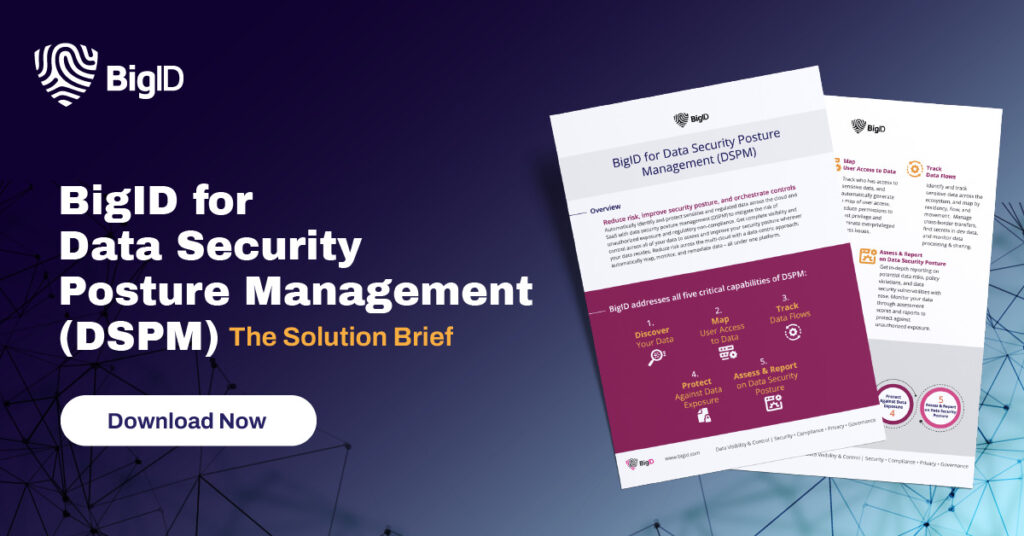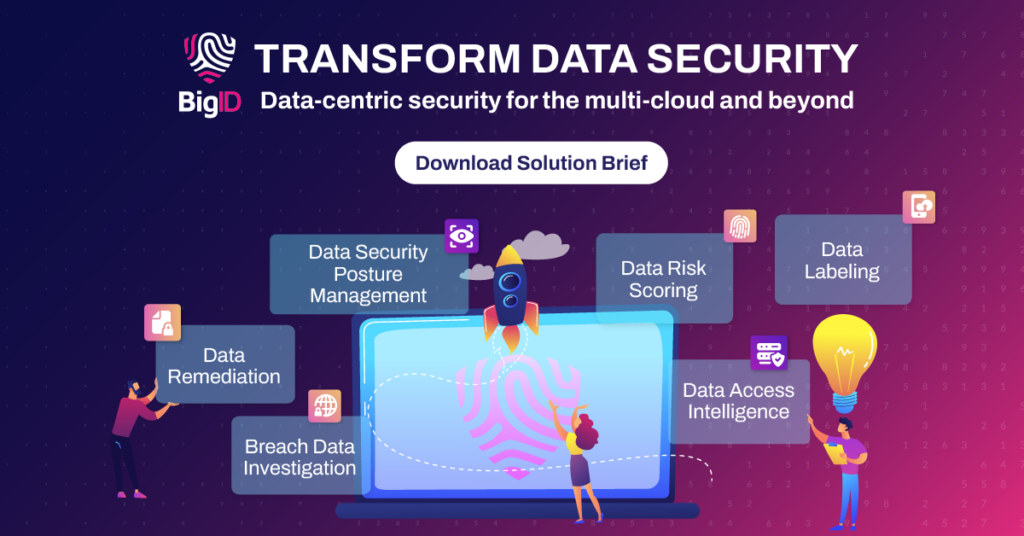What is Shadow Data?
Shadow data refers to the data that is created, stored, and managed outside of an organization’s approved IT systems and infrastructure. This data can be created by employees using their personal devices, using third-party applications and services, or even by simply saving files to local hard drives or cloud storage accounts without authorization.
The existence of shadow data can pose a significant security risk for organizations, as it can be difficult to track, control, and protect. Shadow data can also lead to data leaks and breaches if it contains sensitive or confidential information.
How Does Shadow Data Occur?
Shadow data happens when employees create, store, and manage data outside of an organization’s approved IT systems and infrastructure. This can occur for various reasons, such as convenience, productivity, or the use of personal devices and applications. For example:
- Employees may use their personal smartphones, tablets, or laptops to access and store company data, either to work remotely or for convenience.
- Employees may use unauthorized third-party applications or cloud services to collaborate, share, or store data, either because they find them more convenient or because they are not aware of the potential security risks.
- Employees may save files to local hard drives or cloud storage accounts without proper authorization, either because they want to keep a backup copy or because they do not want to use the organization’s approved systems.
Mitigating Shadow Data Risks
Steps to mitigate the risk of shadow data include:
- Establishing clear policies and procedures for the use of personal devices and third-party applications to manage data.
- Providing regular employee training to raise awareness about the risks of shadow data and the importance of following security protocols.
- Implementing data classification and access controls to ensure that sensitive information is properly secured and accessed only by authorized personnel.
- Regularly auditing and monitoring shadow data usage to detect potential security risks and ensure compliance with organizational policies.
- Using security technologies such as encryption, firewalls, and anti-malware software to protect data against unauthorized access, theft, or loss.
- Collaborating with employees to identify and manage shadow data sources and develop solutions to address any risks or compliance issues.

Shadow IT vs Shadow Data
Shadow IT refers to the use of unauthorized hardware, software, or cloud services by employees, without the knowledge or approval of the organization’s IT department. Shadow IT can pose significant risks to the organization, including security vulnerabilities, compliance violations, and loss of control over data.
Shadow AI data, on the other hand, refers to the data created, stored, and managed outside of an organization’s approved IT systems and infrastructure, which can include data created by employees using Shadow IT generative AI. Shadow data can pose similar risks to the organization, including data breaches, compliance violations, and reputational damage.
While Shadow IT and Shadow data are closely related, they are not the same thing. Shadow IT can be a contributing factor to the creation of Shadow data, but Shadow data can also be created and managed by employees without the use of unauthorized hardware, software, or cloud services. Therefore, organizations need to address both Shadow IT and Shadow data to ensure that they are adequately managing and securing their data and IT systems.
Notable Shadow Data Related Breaches
Uber Data Breach (2016):
Shadow Data Involvement: Uber employees used personal storage services for company data backups.
Breach Details: Hackers gained access to a private GitHub repository used for code development and discovered credentials for Uber’s AWS storage. This allowed them to access and download personal data of 57 million Uber users and drivers.
Equifax Data Breach (2017):
Shadow Data Involvement: Equifax failed to identify and patch vulnerabilities in its web applications, which resulted in unauthorized access.
Breach Details: Hackers exploited these vulnerabilities, gaining access to sensitive personal and financial data of approximately 143 million individuals. The breach was exacerbated by inadequate data security practices.
Common IT Vulnerabilities to Avoid
IT departments may encounter various challenges that can contribute to their failure to effectively combat shadow data risks. Some common reasons for this failure include:
- Lack of Awareness: IT departments may not be fully aware of the extent of shadow data practices within the organization, making it challenging to address the issue.
- Limited Visibility: Shadow data often exists outside the official IT infrastructure, making it difficult for IT teams to monitor and control. Without visibility into these practices, it’s challenging to combat them.
- Complexity of Shadow IT: Shadow data can encompass a wide range of tools and services, including personal devices, cloud storage, and unsanctioned software. Managing this complexity can be overwhelming for IT departments.
- Employee Resistance: Employees may resist IT’s efforts to control or monitor their use of shadow data tools, viewing it as an intrusion into their work habits.
- Resource Constraints: IT departments may lack the resources, both in terms of personnel and technology, to effectively address shadow data risks.
- Insufficient Security Policies: The absence of clear and enforceable security policies can leave IT departments without the necessary framework to combat shadow data practices effectively.
- Overlooked Data Classification: Organizations may not have properly classified their data, making it challenging to differentiate between sensitive and non-sensitive information.
- Inadequate Training: IT staff may lack the necessary training and skills to identify and address shadow data risks effectively.
- Underestimating the Risks: IT departments may underestimate the potential security and compliance risks associated with shadow data, leading to insufficient mitigation efforts.
- Privacy Concerns: Balancing data security with privacy concerns can be challenging. IT departments may be hesitant to monitor employee activities too closely due to privacy considerations.
DSPM and Shadow Data
Data Security Posture Management (DSPM) is a set of practices and tools used to assess, manage, and enhance an organization’s data security posture. When integrated with shadow data, DSPM helps organizations address the security risks associated with uncontrolled or unauthorized data practices. Here’s a simple explanation of how DSPM integrates with shadow data:
- Identification of Shadow Data: DSPM tools scan and analyze an organization’s data environment to identify shadow data. This includes data stored in unauthorized locations or used with unapproved tools and services.
- Risk Assessment: DSPM assesses the security risks associated with shadow data, including data exposure, compliance violations, and potential breaches.
- Policy Alignment: Organizations align their data security policies with DSPM findings to include shadow data. This ensures that security policies cover both official and shadow data practices.
- Alerts and Remediation: DSPM generates alerts and recommendations for addressing shadow data risks. Security teams can then take corrective actions to mitigate these risks, such as blocking unauthorized access or implementing access controls.
- Compliance Assurance: DSPM helps organizations ensure that their data security practices, including those related to shadow data, comply with regulatory requirements and industry standards.
- Continuous Improvement: DSPM enables organizations to continually assess and improve their data security posture, adapting to evolving threats and changes in the shadow data landscape.
BigID’s Approach to Reducing Shadow Data Risk
BigID is a data discovery platform for privacy, security, and governance that provides solutions to identify, manage, and secure an organization’s data, including shadow data. Here’s how BigID can help reduce or avoid shadow data risk:
- Data discovery: Using advanced AI and ML classification, BigID automatically and accurately discovers and classifies sensitive data, including shadow data, across on prem stores, cloud applications, and endpoints. Giving organizations greater visibility into their data landscape, understanding where their sensitive data resides, and prioritizing their data protection efforts.
- Access Intelligence: BigID’s Access Intelligence App detects excessive access and exposed data, while implementing a zero-trust model. Secure any overexposed data and swiftly address potential security breaches or unauthorized access— decreasing the chances of internal security threats, data leaks, and data breaches.
- Data remediation: BigID’s Data Remediation App effectively addresses and resolves issues related to high-risk, sensitive, and regulated data. Utilize custom workflows, complete audit trails, and notifications to confidently manage data remediation. Remain informed with alerts and notifications throughout the remediation process.
- Risk analysis: BigID’s Risk Scoring App assesses the risk associated with your shadow data, based on factors such as data sensitivity, access permissions, and usage patterns. Allowing you to prioritize data protection efforts, allocate resources effectively, and demonstrate compliance with regulatory requirements.
To start minimizing your organization’s risk and uncovering your shadow data— get a 1:1 demo with BigID today.


